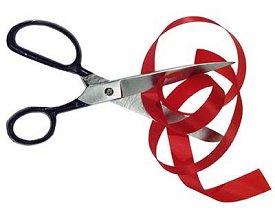One of Barack Obama’s proudest boasts was his claim he’d “saved” the American auto industry during the first year of his presidency. Maybe. He certainly did a lot, some of which might have actually been helpful, to keep the doors open at General Motors and to bridge the sale of Chrysler to Fiat, but it’s not clear he did much to help Ford or any of the foreign manufacturers who build so many vehicles here in the U.S.
What he and his cohort didn’t want to talk about, then or now, is all the policies they advocated that had helped put U.S.-owned manufacturers in the fix they found themselves in. This is particularly true in the environmental arena, where rules governing the corporate average fuel economy standards did so much to compel the production of cars people didn’t want.
Requiring the auto companies to build more cars that got more miles to the gallon may seem like a good idea. In fact, it may be — as long as the regulations had enough flexibility to allow the companies to experiment with how they got there. They didn’t, and Detroit — which was slow to catch on to a lot of things — paid the price.
The Trump administration is now taking the CAFE issue head on. The Department of Transportation, the Environmental Protection Agency, the White House, the automakers, and the state of California — which thinks it ought to be setting environmental policy for the nation — have been meeting for some time about rewriting the current rules which, most analysts agree, have been overtaken by events.
Hopefully, the outcome of these discussions will be a deregulatory plan that improves vehicle safety, expands consumer choice, and prevents further economic harm from coming to the auto industry while maintaining reasonable fuel consumption standards.
The last time the issue was addressed, back in 2012, the EPA and the National Highway Traffic Safety Administration issued fuel economy regulations that were supposed to be good through the year 2025. Further, California (which makes its own rules) agreed to abide by that regime. By 2018, however, the EPA determined what had been agreed to was no longer feasible, creating the need to start the process again.
The reasons for the change are obvious. Today’s fuel prices are lower than they were predicted to be in 2012. The U.S. will soon be the world’s leading producer of fossil fuels and is likely to become a net petroleum exporter over the next decade. Meanwhile, many didn’t like or couldn’t use the smaller cars that higher CAFE standards and stricter safety standards together forced the industry to build. And so, they moved more heavily into the separately regulated realm of SUVs, crossovers, and trucks, so that “light trucks” now make up more than 60 percent of the U.S. new vehicle fleet.
All this has produced a strange dichotomy. Newer cars may be safer and more fuel efficient — analyses conducted post-2012 by the U.S. government and private firms show this to be the case — but these advances have pushed the cost of new vehicles up beyond what many consumers can afford to pay. Consequently, they’re either holding on to older cars for a longer period of time or, when the time comes to buy a new one, they’re buying used, because cost is the single most important factor in determining what they’ll get. As bizarre as it may sound, this means the higher fuel efficiency standards are actually doing more to keep people out of fuel efficient cars than they are to get people into them.
If you’re anti-automobile, as many environmentalist groups actually appear to be — they’ll be fine when the only source of transportation is an electric vehicle you share with your neighbors when you need a ride someplace — then, that outcome is fine. But if you actually believe in a right to be mobile, in consumer choice, and in the ability of technology to solve problems, then you want a different outcome. Where the Trump folks are going hews more towards the latter.
The new proposed rules, some of which are already beginning to work their way through the regulatory clearance bureaucracy, would still improve vehicle fuel economy, but would also protect jobs and consumers, making it a win-win for just about everyone. The final plan should, and needs to, focus on standards that are realistic, make good economic sense, are technologically feasible, and are consistent with the idea we need to do more with what we have.
The most abundant source of new energy America has, as Bush-era Energy Secretary Sam Bodman used to say, is still the energy produced every day but wasted through inefficiencies. We’re not running out of oil, but it’s not at all wrong to want to use what we have in more efficient ways, which an improvement on the current CAFE standards can accomplish while still letting American consumers drive the cars they want, built according to their tastes and not just Washington specifications.
